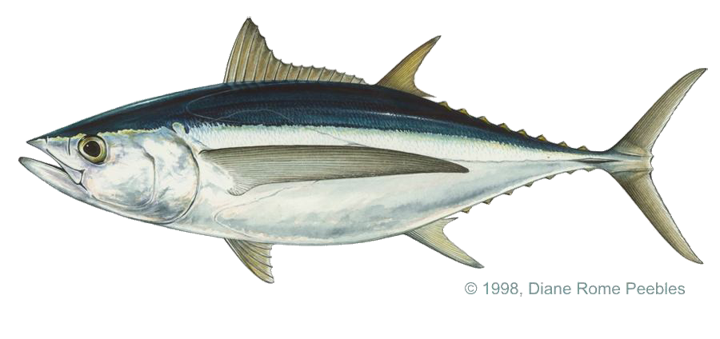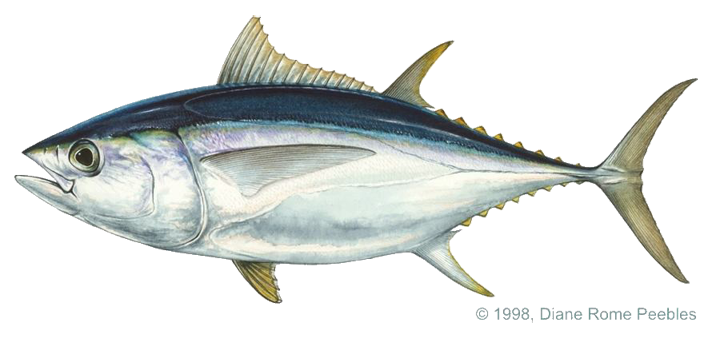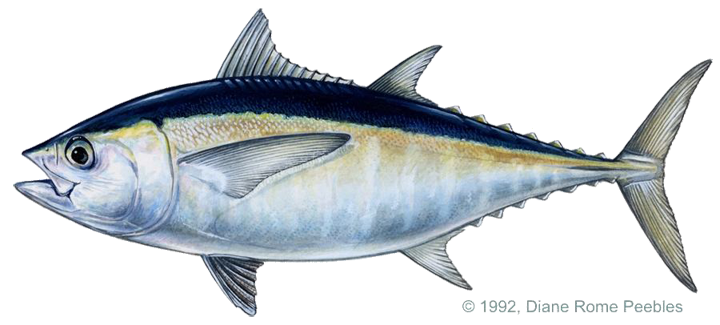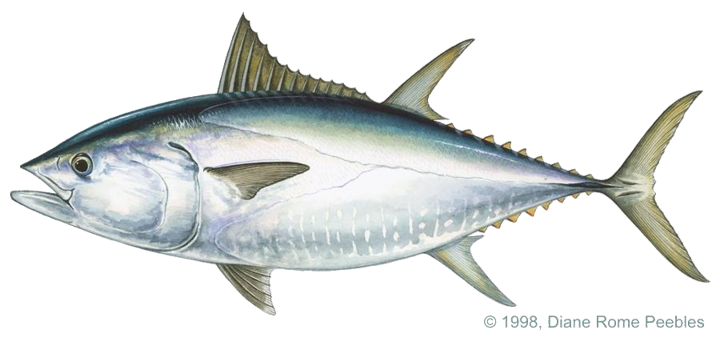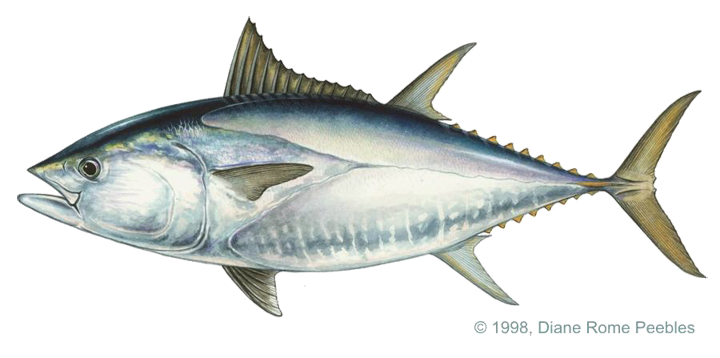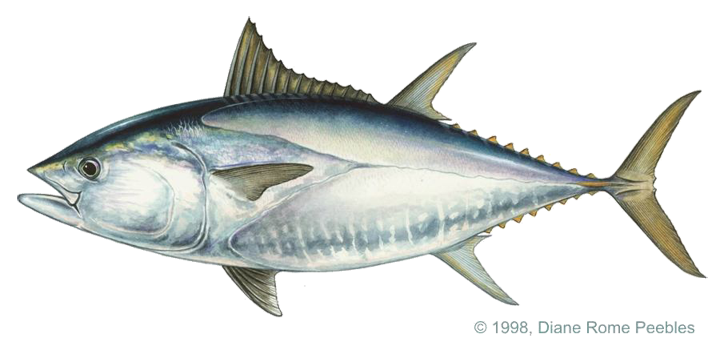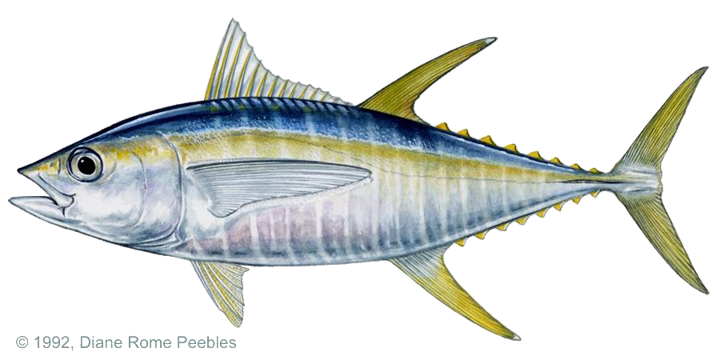Game Fish Identification Reference Guides
Tuna, longtail
(Thunnus tonggol)
(Thunnus tonggol)
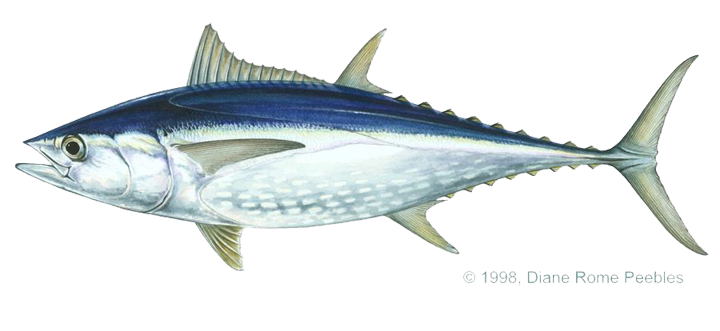
(Bleeker, 1851); SCOMBRIDAE FAMILY; also called northern bluefin tuna, oriental bonito
Occurs in the tropical and subtropical central Pacific Ocean throughout Southeast Asia to the eastern Indian Ocean and Gulf of Aden. Though largely coastal, it avoids low salinity areas near the mouths of rivers. It is also seasonally migratory, occurring in large feeding schools off the western and northeastern coasts of Australia. Smaller schools occur off the coasts of India.
It is less robust and more elongated than the southern bluefin tuna (Thunnus maccoyi). Other traits which separate this species from the southern bluefin are colorless oval spots on the belly, the absence of a swim bladder, the lack of striations on the liver surface, and the lower gill raker count, 20 23 mean total. The ventral surface from about the pectoral fin to the anal is covered with colorless elongated spots. The tips of the second dorsal and anal fins are yellow. The finlets are yellow and edged with gray.
Its diet consists of a wide variety of crustaceans, cephalopods (squid) and fish, including hardyheads and garfish. Longtail tuna are often observed making dashing bursts through dense shoals of bait fish, showering spray as they do so.
Big schools can often be seen on the surface but are often virtually impossible to hook. At other times this fish will take lures and baits without any previous indication of its presence. The fight is a tough one, both on the surface and deep down.
Trolling small feathers over “holes” in the bottom and between coral reefs at high tide produces strikes. Also, trolling live or dead baits through dumped trash fish behind. Artificial lures and saltwater flies is also popular. The flesh is pink and of good quality
Occurs in the tropical and subtropical central Pacific Ocean throughout Southeast Asia to the eastern Indian Ocean and Gulf of Aden. Though largely coastal, it avoids low salinity areas near the mouths of rivers. It is also seasonally migratory, occurring in large feeding schools off the western and northeastern coasts of Australia. Smaller schools occur off the coasts of India.
It is less robust and more elongated than the southern bluefin tuna (Thunnus maccoyi). Other traits which separate this species from the southern bluefin are colorless oval spots on the belly, the absence of a swim bladder, the lack of striations on the liver surface, and the lower gill raker count, 20 23 mean total. The ventral surface from about the pectoral fin to the anal is covered with colorless elongated spots. The tips of the second dorsal and anal fins are yellow. The finlets are yellow and edged with gray.
Its diet consists of a wide variety of crustaceans, cephalopods (squid) and fish, including hardyheads and garfish. Longtail tuna are often observed making dashing bursts through dense shoals of bait fish, showering spray as they do so.
Big schools can often be seen on the surface but are often virtually impossible to hook. At other times this fish will take lures and baits without any previous indication of its presence. The fight is a tough one, both on the surface and deep down.
Trolling small feathers over “holes” in the bottom and between coral reefs at high tide produces strikes. Also, trolling live or dead baits through dumped trash fish behind. Artificial lures and saltwater flies is also popular. The flesh is pink and of good quality













